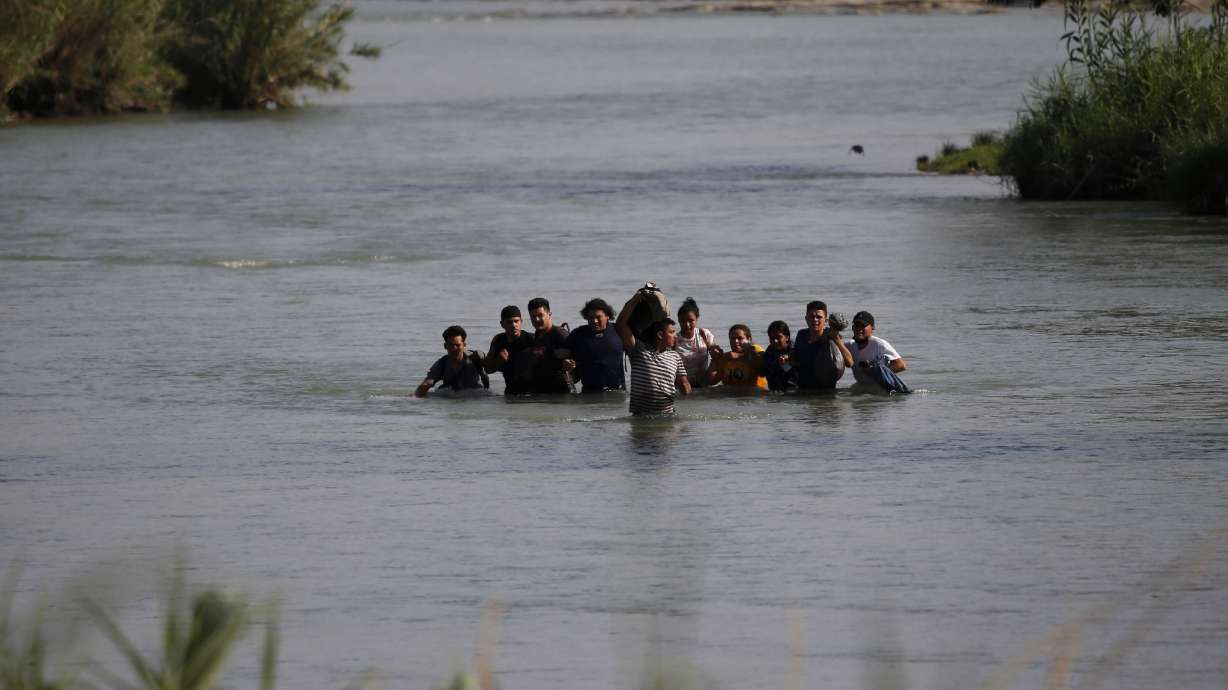Estimated read time: 3-4 minutes
This archived news story is available only for your personal, non-commercial use. Information in the story may be outdated or superseded by additional information. Reading or replaying the story in its archived form does not constitute a republication of the story.
WASHINGTON — Officers made more immigration arrests along the U.S.-Mexico border in May than any month since records were kept.
That's according to recent data released by U.S. Customs and Border Protection. The data shows a 2% increase from April as a growing number of migrants from southeast Asia, Russia and the Middle East attempt to enter the U.S. along the Mexican border.
The numbers: The new figures bring the total number of migrant encounters this year to over 1.7 million, on track to surpass last year's record-breaking 1.9 million. Consider this:
- In May, Customs and Border Protection reported 239,416 arrests in the Southwest — that's up from 235,478 in April, 222,339 in March and 165,902 in February.
- Most, but not all, were arrested along the border — 16,760 were apprehended by field operation offices.
- Almost half of those apprehended — 165,200 — were single adults.
- Customs and Border Protection also reportedly encountered 59,282 "individuals in a family unit" and 14,699 unaccompanied minors.
Where the migrants are coming from: Migrants from Mexico continue to be the largest group of people apprehended, with 76,887 interdicted in May. However, that's a slight decrease from 82,393 apprehended in April, according to demographic data obtained by the Hill.
- Cuban nationals are the second largest group crossing the border, followed by migrants from Guatemala, Honduras, Colombia and Nicaragua, according to the Hill.
- Migrants fleeing violence in Haiti continue to come across the border, with over 10,400 apprehended in May, up from 5,704 in April.
Data shows that spring months, especially May, are the busiest for officers. However, Customs and Border Protection is dealing with an unprecedented number of migrants from India, Turkey and Russia. Many fly to Mexico, where a visa is not required, then seek asylum at U.S. ports of entry.
- There were 2,438 migrants from India apprehended, a 55% increase from April.
- There were 2,310 migrants from Turkey apprehended, a 51% increase from April.
- There were 3,394 migrants from Russia apprehended, a 102% increase from April.
Title 42 still turning people away: In May, a judge prevented the Biden administration from winding down Title 42, a public health policy that allows Border Patrol to turn away migrants to prevent the spread of COVID-19.
Customs and Border Protection data shows the law is still being used to deny migrants entry to the U.S. — roughly 100,699 were turned away under Title 42 in May. That's standard, with around 100,000 expelled under the controversial law each month since February.
What CBP is saying: In a statement to the Washington Post, Customs and Border Protection Commissioner Chris Magnus warned that the increasingly hot summer could result in dangerous conditions for migrants, some of whom come from countries in Europe or Asia that are far from the scorched desert of the American Southwest.
"As temperatures start to rise in the summer, human smugglers will continue to exploit vulnerable populations and recklessly endanger the lives of migrants for financial gain. The terrain along the Southwest Border is extreme, the summer heat is severe, and the miles of desert that migrants must hike after crossing the border are unforgiving," he said.
However, the migrants that are coming from countries outside of Latin America are typically not crossing the border through the remote desert — instead, they often cross the Rio Grande or find gaps in the U.S. border wall, then request humanitarian parole or asylum when they find border agents.
That adds to the growing backlog of over 400,000 asylum cases, according to The Washington Post.
More apprehensions does not equal more migrants: While May was a record-breaking month for migrant apprehensions, it's hard to know if that reflects the true number of migrants at the U.S.-Mexico border.
Changing policies within CBP mean more migrants are apprehended. As Aaron Reichlin-Melnik, policy director at the American Immigration Council, pointed out on Twitter, interdiction rates are rising — in 2000, the rate was around 50%, compared to 75% to 80% now.
The ranks of the Border Patrol have also ballooned to 17,000 officers, nearly double the 9,212 that were working in 2000, according to Reichlin-Melnik.
In March 2000, when there were ~8,500 Border Patrol agents and less than half of crossers were arrested, there were 220,063 apprehensions.
— Aaron Reichlin-Melnick (@ReichlinMelnick) June 16, 2022
Last month, with 17,000 agents and a CBP "interdiction rate" around ~75-80%, there were 222,652 apprehensions.
This is not unprecedented. https://t.co/IR6KO5iZvO










